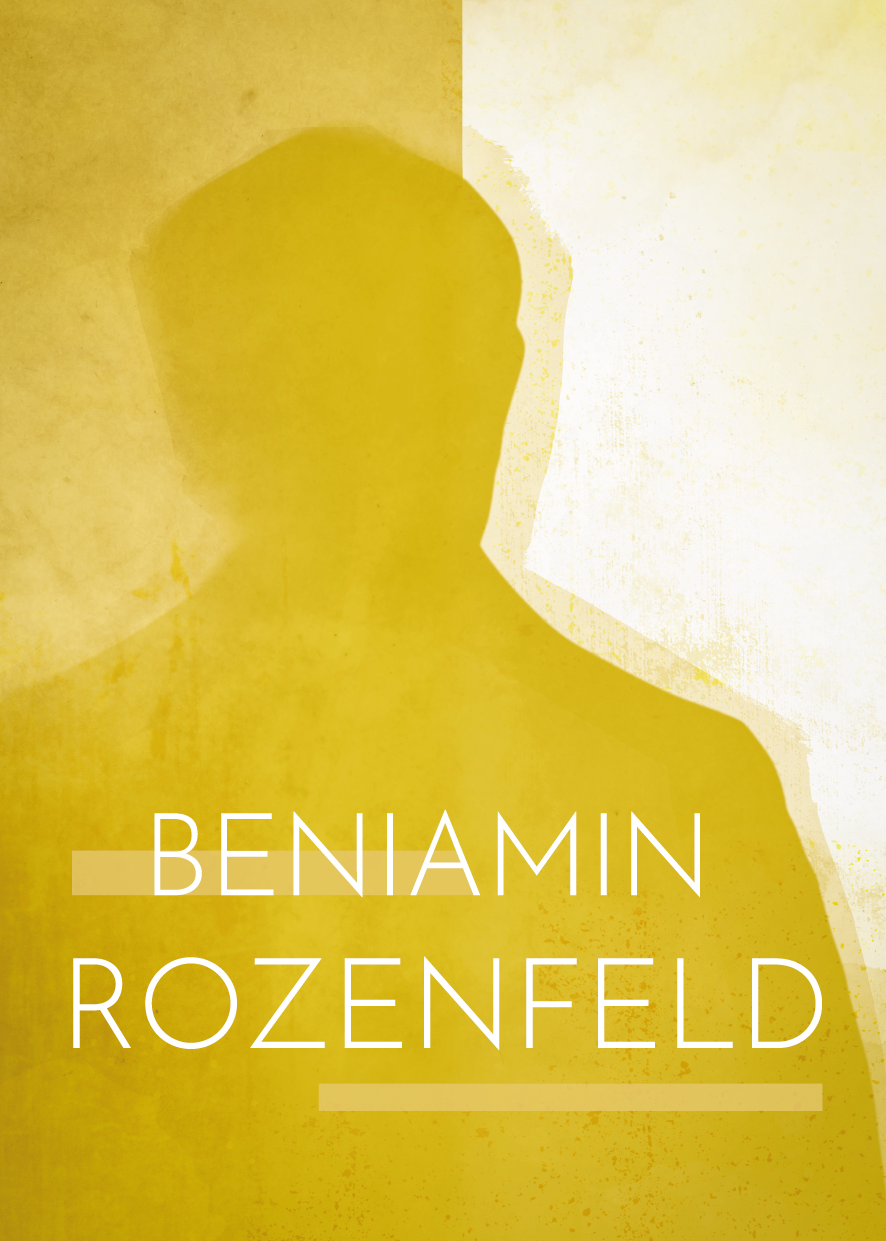1909 (or 1912), Lviv (today’s Ukraine) – 1944, Warsaw Uprising (Poland)
Biography
Beniamin Rozenfeld is the author of five sketches discovered in 1946 and preserved in the Part I of the Ringelblum Archive (Underground Warsaw Ghetto Archive). A member of the ghetto resistance, Rozenfeld participated in the Jewish uprising in 1943. He continued to take part in the Warsaw Uprising the following year in which he died. He was buried at the Powązki Military Cemetery.
When the Kordegarda Gallery in Warsaw first presented his drawings to the public in August 2012, the artist was referred to only by his surname “Rozenfeld”; his given name was unknown. The exhibition, Ghetto Diary – Drawings from the Underground Archives of the Warsaw Ghetto, was organised by the Emanuel Ringelblum Jewish Historical Institute and the National Centre for Culture, as part of commemoration of the 70th anniversary of the liquidation of the Warsaw Ghetto. All five of his surviving works: Staging Point, Chaimek Sztarkman, Hospital “on the Other Side,” Funeral for the Hawker’s Wife and Funeral Fund were drawn using ink, charcoal and crayon and are accompanied by the author’s commentary. They depict dramatic scenes from life in the ghetto and constitute a poignant record of this Jewish artist’s existence.
They were first discovered in 1946 in the Ringelblum Archive. Later, research conducted by Agnieszka Żółkiewicz enabled a reconstruction of the artist’s identity.
Beniamin (Benek) Rozenfeld was born in 1909 (or 1912) in present day Lviv.
He studied at the Faculty of Architecture of the Lviv Polytechnic, and, at the same time, pursued his interest in painting and sculpture. He spent the first years of the war in Lviv. When the Germans took over the city, he fled to Warsaw. Living in the Warsaw Ghetto, he collaborated with the underground organisation “Oneg Shabbat” which created the Underground Warsaw Ghetto Archive, also called the Ringelblum Archive. “Oneg Shabbat” asked him to draw pictures of life in the ghetto. He is believed to have escaped the ghetto in the summer of 1942, during the mass deportations, and went into hiding as Jan Różyński. He helped to smuggle food supplies to the ghetto. In the autumn of 1943, he joined the ranks of the People’s Guard (later the People’s Army), where he operated under the pseudonym “Janek”. He never stopped drawing.
In August 1944, he took part in the Warsaw Uprising as a second lieutenant in the People’s Army, 3rd “Czwartacy” Battalion. Most likely he died on 10 September 1944 and was buried in a mass grave at the Powązki Military Cemetery. Two of his brothers survived the war and emigrated to Israel. His brother Edward became a well-known composer, while his son Alon Oleartchik is a multi-talented Israeli musician.
Sources:
Dziennik getta – Rysunki. Z Podziemnego Archiwum Getta Warszawskiego, https://www.jhi.pl/wydawnictwo/dziennik-getta-rysunki-z-podziemnego-archiwum-getta-warszawskiego,49 (25 February 2023).
Rysunki z getta warszawskiego na wystawie w Kordegardzie, https://dzieje.pl/aktualnosci/rysunki-z-getta-warszawskiego-na-wystawie-w-kordegardzie (25 February 2023).
Żółkiewska Agnieszka, Beniamin Rozenfeld. Rysownik getta warszawskiego, konspirator, powstaniec, https://www.jhi.pl/artykuly/beniamin-rozenfeld-rysownik-getta-warszawskiego,2058 (25 February 2023).
Beniamin Rozenfeld is the author of five sketches discovered in 1946 and preserved in the Part I of the Ringelblum Archive (Underground Warsaw Ghetto Archive). A member of the ghetto resistance, Rozenfeld participated in the Jewish uprising in 1943. He continued to take part in the Warsaw Uprising the following year in which he died. He was buried at the Powązki Military Cemetery.
When the Kordegarda Gallery in Warsaw first presented his drawings to the public in August 2012, the artist was referred to only by his surname “Rozenfeld”; his given name was unknown. The exhibition, Ghetto Diary – Drawings from the Underground Archives of the Warsaw Ghetto, was organised by the Emanuel Ringelblum Jewish Historical Institute and the National Centre for Culture, as part of commemoration of the 70th anniversary of the liquidation of the Warsaw Ghetto. All five of his surviving works: Staging Point, Chaimek Sztarkman, Hospital “on the Other Side,” Funeral for the Hawker’s Wife and Funeral Fund were drawn using ink, charcoal and crayon and are accompanied by the author’s commentary. They depict dramatic scenes from life in the ghetto and constitute a poignant record of this Jewish artist’s existence. They were first discovered in 1946 in the Ringelblum Archive. Later, research conducted by Agnieszka Żółkiewicz enabled a reconstruction of the artist’s identity.
Beniamin (Benek) Rozenfeld was born in 1909 (or 1912) in present day Lviv.
He studied at the Faculty of Architecture of the Lviv Polytechnic, and, at the same time, pursued his interest in painting and sculpture. He spent the first years of the war in Lviv. When the Germans took over the city, he fled to Warsaw. Living in the Warsaw Ghetto, he collaborated with the underground organisation “Oneg Shabbat” which created the Underground Warsaw Ghetto Archive, also called the Ringelblum Archive. “Oneg Shabbat” asked him to draw pictures of life in the ghetto. He is believed to have escaped the ghetto in the summer of 1942, during the mass deportations, and went into hiding as Jan Różyński. He helped to smuggle food supplies to the ghetto. In the autumn of 1943, he joined the ranks of the People’s Guard (later the People’s Army), where he operated under the pseudonym “Janek”. He never stopped drawing.
In August 1944, he took part in the Warsaw Uprising as a second lieutenant in the People’s Army, 3rd “Czwartacy” Battalion. Most likely he died on 10 September 1944 and was buried in a mass grave at the Powązki Military Cemetery. Two of his brothers survived the war and emigrated to Israel. His brother Edward became a well-known composer, while his son Alon Oleartchik is a multi-talented Israeli musician.
Sources:
Dziennik getta – Rysunki. Z Podziemnego Archiwum Getta Warszawskiego, https://www.jhi.pl/wydawnictwo/dziennik-getta-rysunki-z-podziemnego-archiwum-getta-warszawskiego,49 (25 February 2023).
Rysunki z getta warszawskiego na wystawie w Kordegardzie, https://dzieje.pl/aktualnosci/rysunki-z-getta-warszawskiego-na-wystawie-w-kordegardzie (25 February 2023).
Żółkiewska Agnieszka, Beniamin Rozenfeld. Rysownik getta warszawskiego, konspirator, powstaniec, https://www.jhi.pl/artykuly/beniamin-rozenfeld-rysownik-getta-warszawskiego,2058 (25 February 2023).
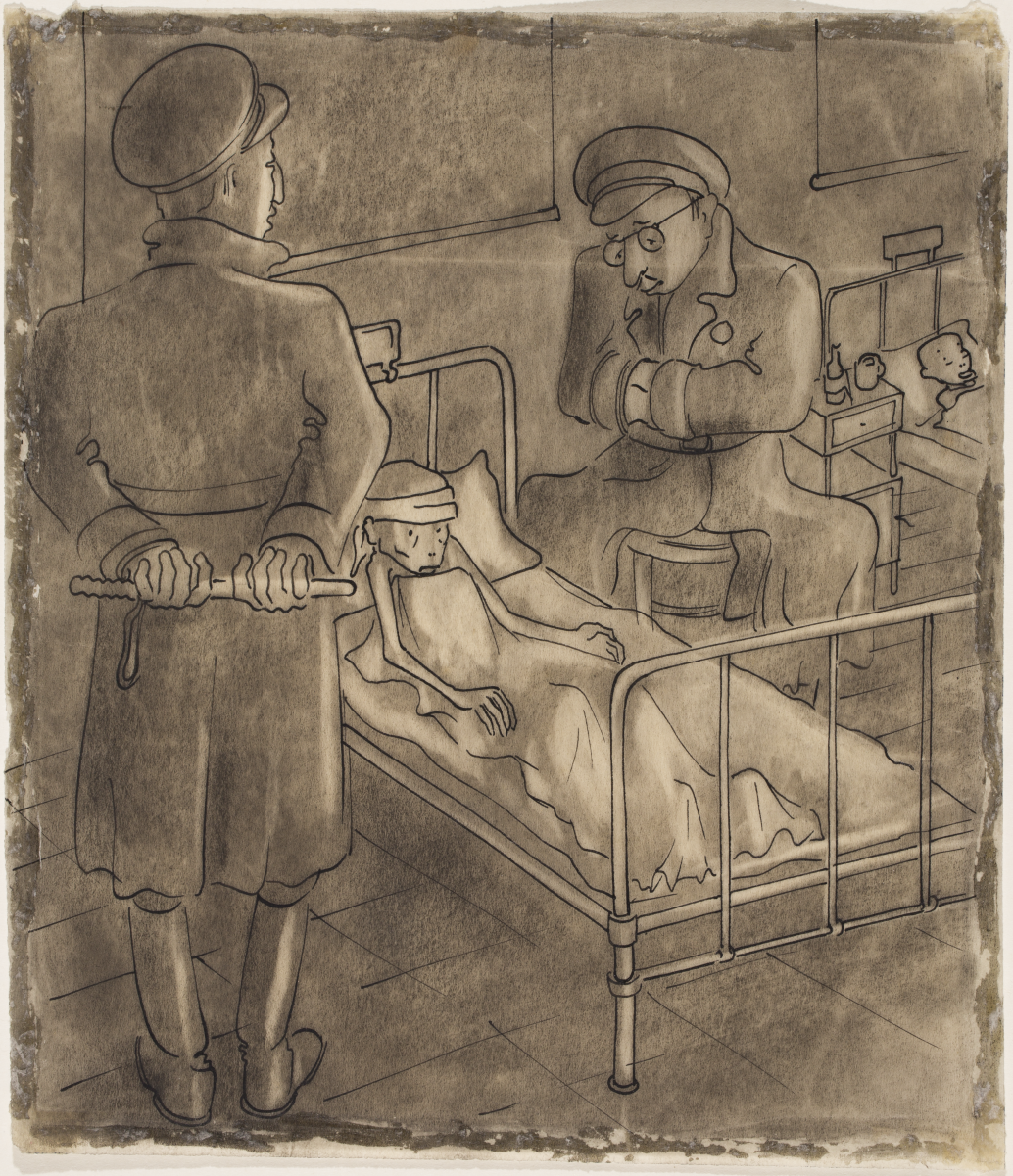 Beniamin Rozenfeld, Chaimek Sztarkman, ze zbiorów Żydowskiego Instytutu Historycznego im. Emanuela Ringelbluma
Beniamin Rozenfeld, Chaimek Sztarkman, ze zbiorów Żydowskiego Instytutu Historycznego im. Emanuela Ringelbluma
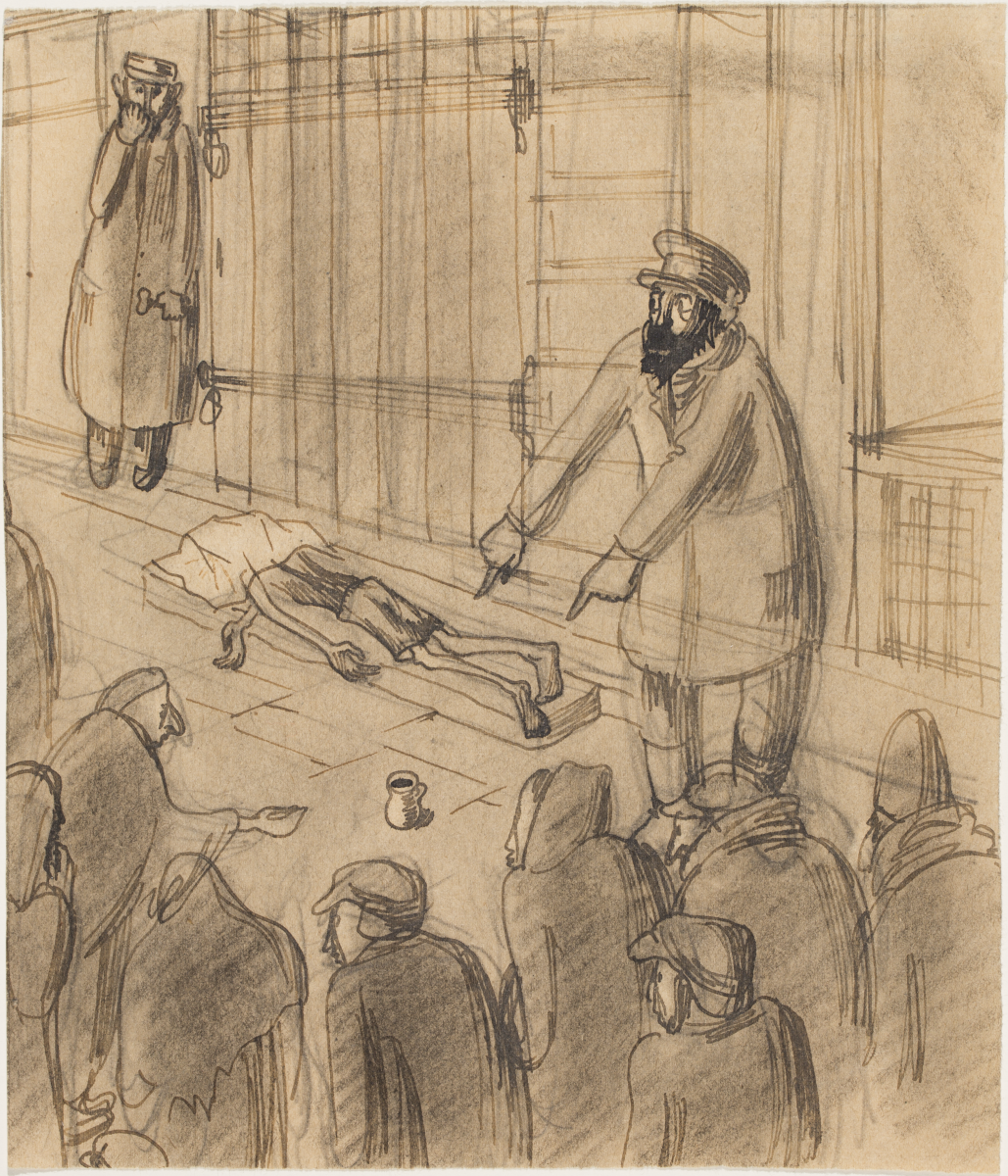 Beniamin Rozenfeld, Fundusz pogrzebowy, ze zbiorów Żydowskiego Instytutu Historycznego im. Emanuela Ringelbluma
Beniamin Rozenfeld, Fundusz pogrzebowy, ze zbiorów Żydowskiego Instytutu Historycznego im. Emanuela Ringelbluma
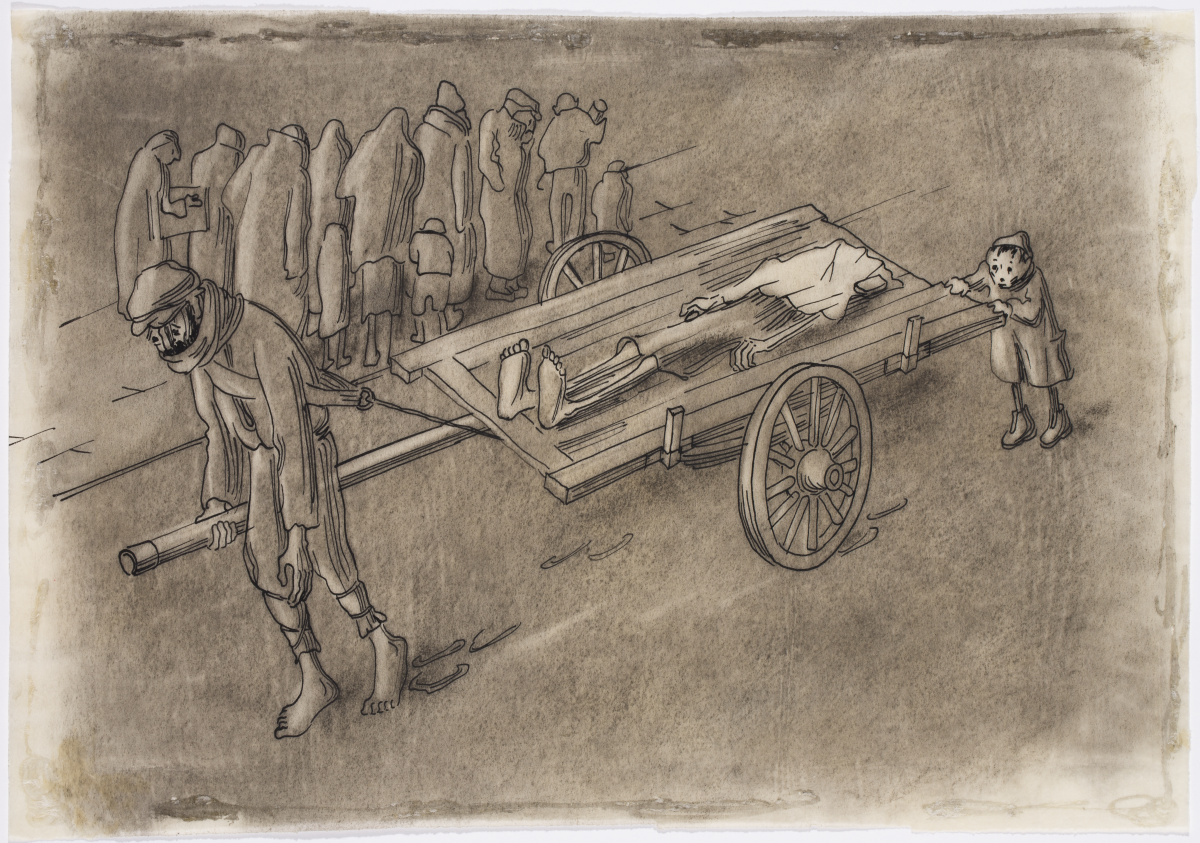 Beniamin Rozenfeld, Pogrzeb wózkarzowej, ze zbiorów Żydowskiego Instytutu Historycznego im. Emanuela Ringelbluma
Beniamin Rozenfeld, Pogrzeb wózkarzowej, ze zbiorów Żydowskiego Instytutu Historycznego im. Emanuela Ringelbluma
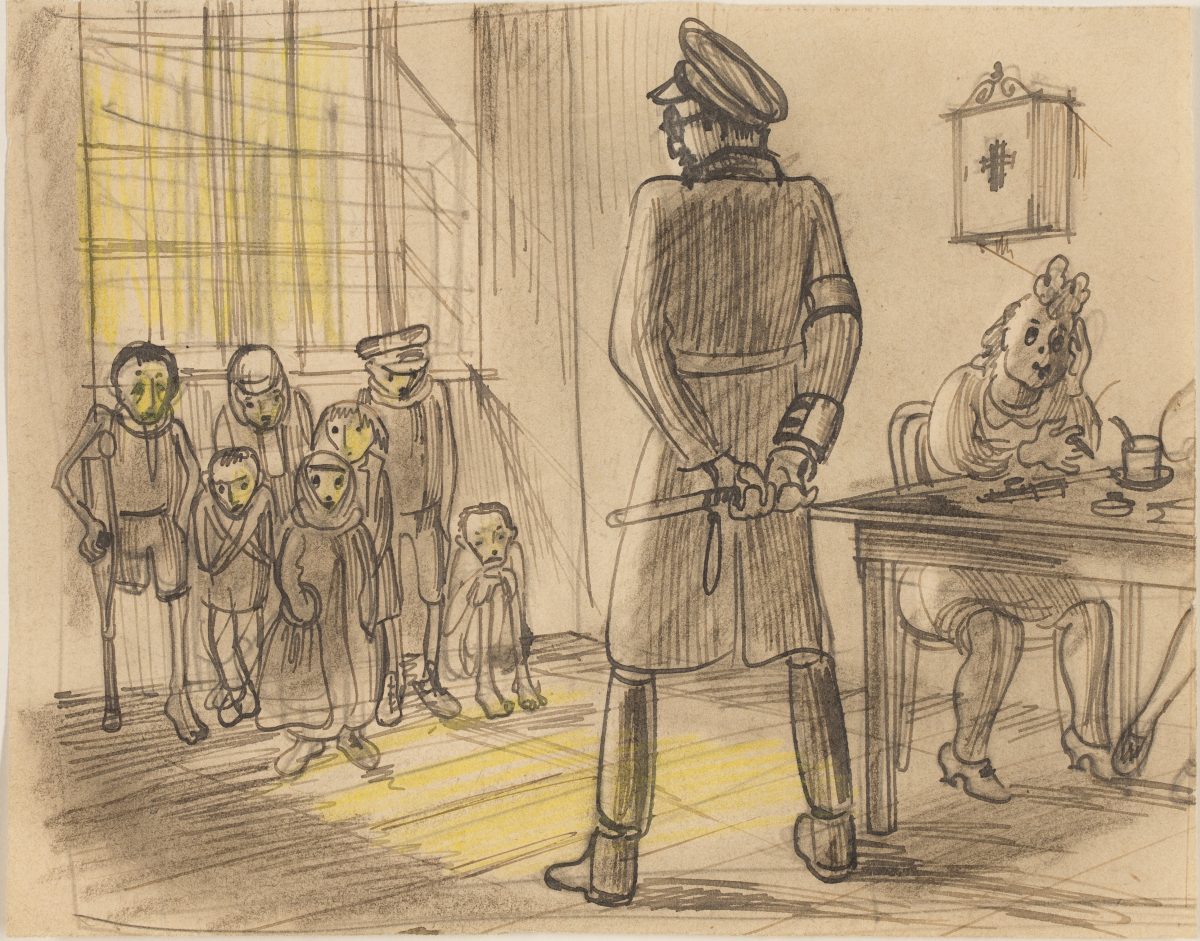 Beniamin Rozenfeld, Punkt etapowy, ze zbiorów Żydowskiego Instytutu Historycznego im. Emanuela Ringelbluma
Beniamin Rozenfeld, Punkt etapowy, ze zbiorów Żydowskiego Instytutu Historycznego im. Emanuela Ringelbluma
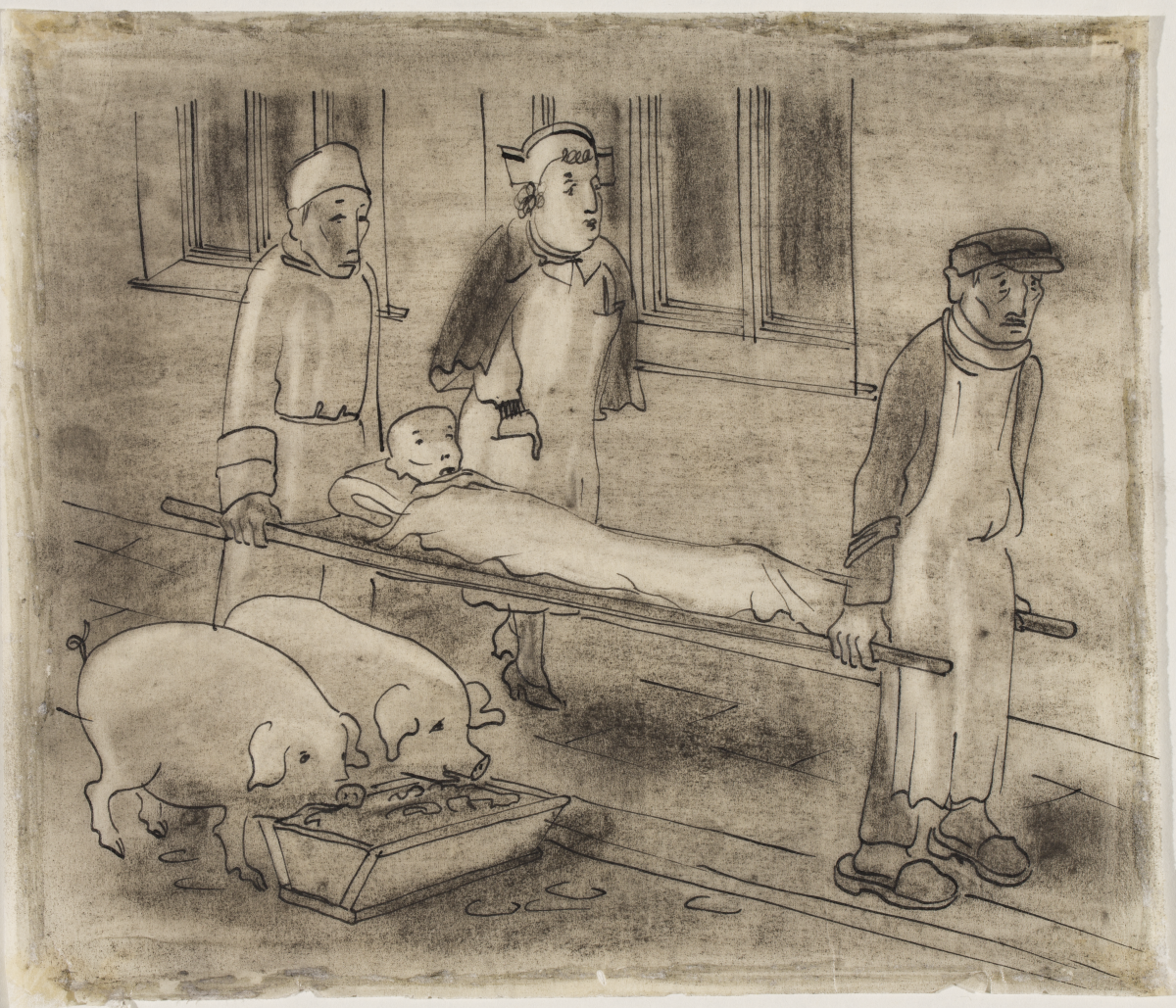 Beniamin Rozenfeld, Szpital po tamtej stronie, ze zbiorów Żydowskiego Instytutu Historycznego im. Emanuela Ringelbluma
Beniamin Rozenfeld, Szpital po tamtej stronie, ze zbiorów Żydowskiego Instytutu Historycznego im. Emanuela Ringelbluma

